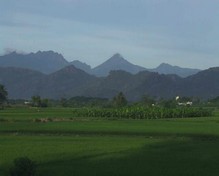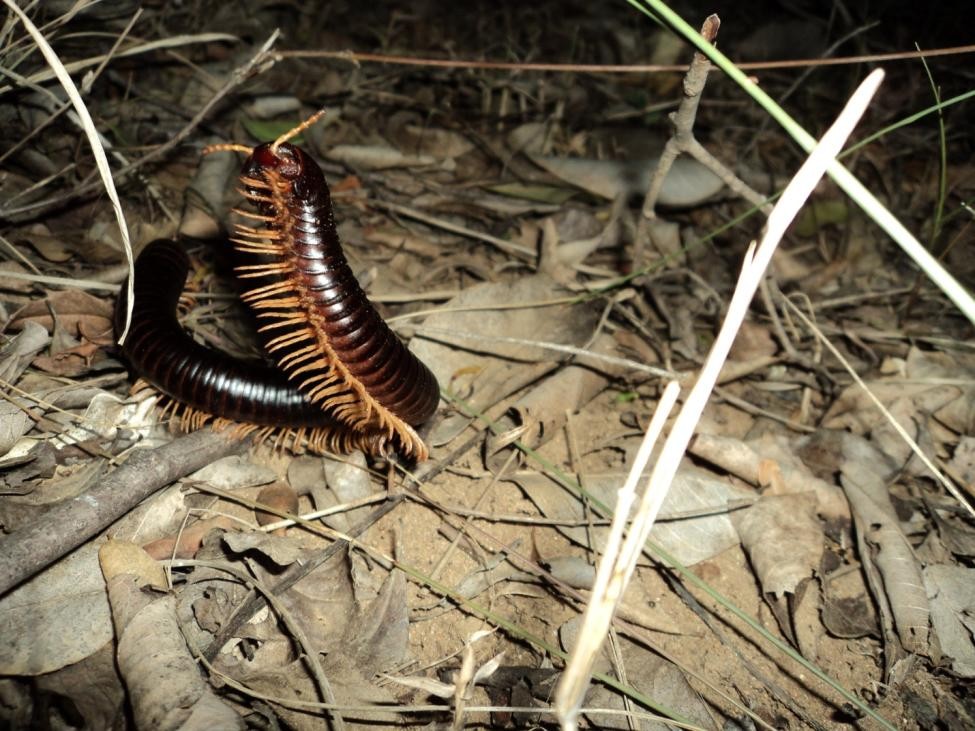Agasthya
A newsletter on the Natural History, Ecology
and Conservation of the Agasthyamalai region, Western Ghats, India.
Any and all opinions expressed in this newsletter are solely those of the author(s) and do not reflect the opinion of ATREE.
Editorial Team
Editor: T. Ganesh
Associate editor: Vivek Ramachandran
Editorial Review: R. Ganesan, M. Soubadra Devy
Design and presentation: Vivek Ramachandran
A S H O K A T R U S T F O R R E S E A R C H I N E C O L O G Y A N D T H E E N V I R O N M E N T
The Millipede Extravaganza in KMTR
-R Smrity
The past 3 weeks in KMTR and Singampatti have been the most exciting and educational in my life. After my B.Sc from Mount Carmel College, Bangalore, I decided to take a year off from the regular academia to learn more about field ecology and conservation science. Thatís when I came across ATREEís ACCC project and in no time I mailed Mathivanan. I came to ATREE as a volunteer for the SMK festival. I volunteered for the road-kill survey, occupancy studies and monitoring millipedes. Before coming to KMTR, my acquaintance with millipedes was through the internet and few books.
For the millipedes study, we laid some ground quadrates in our marked segments. But to my surprise, the millipedes which are mostly terrestrial and litter-dwelling, were all arboreal and none could be found in the quadrats. I started questioning their strange behavior and searched for papers about these animals. But the number of my questions increased and very few answers. My discussion with Ganesh gave me an opportunity to study these wonderful creatures during the Conservation science Course.
I had observed that these animals show some temporal pattern in their position on trees and are predominantly inactive during the hot days. But they become active during evenings or when the weather was cool, windy and humid during daytime. During the short stint I did a few observations in search of answers for a number of questions.
The project improved with more inputs from Aravind. I found a definite pattern of spatial and temporal arrangement in the millipedes which can be associated with forest type. I measured girth of the tree, canopy cover, bark colour and texture, leaf litter and their position on the tree as parameters for understanding their spatial distribution. We could find clearly that the population was more dispersed in dry evergreen forests and there was no directional preferences on the tree trunk shown by the millipedes. In dry deciduous forests, they were more clustered and showed obvious preference to SE-SW direction.
The behavioural study of the millipedes was another challenge, as the animals would show active movement only during the night, when the weather was cooler. I had to sit with the millipedes, documenting their behavior right up to 9.30 pm. Many a time, the rain gods disappointed me by reducing my sampling duration.
Overall, this was a great learning process and I would love to gather more information about these animals and learn more ways to comprehend the data I have generated by observing them.
Centre for Excellence in Conservation Science
Royal Enclave,Srirampura,Jakkur Post
Bangalore-560064
Telephone: 080-23635555 (EPABX)
Fax : 080- 23530070








